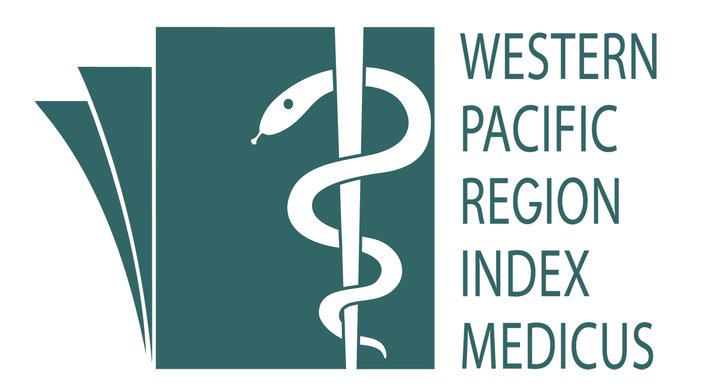Cabaran Dalam Pencegahan dan Kawalan Plasmodium Knowlesi Malaria Di Rantau Asia Tenggara – Ulasan Naratif
Challenges in the Prevention and Control of Plasmodium Knowlesi Malaria in the Southeast Asian Region – A Narrative Review
Keywords:
Malaria, Plasmodium knowlesi, challenges, obstacles, review, Cabaran, Halangan, NaratifAbstract
Introduction:
Despite the success of the human malaria elimination campaign, there is an alarming rise in Plasmodium knowlesi (P. knowlesi) malaria infections among humans in the Southeast Asian region. A thorough grasp of the challenges in preventing and controlling this zoonotic malaria must be addressed, particularly when determining the most effective strategy to halt the disease's transmission.
Methodology:
A comprehensive literature review was conducted using specific keywords in PubMed, Google Scholar, and Scopus databases. Relevant articles were assessed for thematic trends. Overall, 32 articles were selected for this narrative.
Results:
Human heterogeneity, such as local socioeconomic and sociocultural variability, low perception and optimal adherence to prevention and control measures, must be tackled with. Issues of national funding, program implementation, and bureaucratic red tape must be overcome to effectively manage the role that the government and multisectoral collaboration play in managing malaria. Successfulness of a program will be hampered if there is no support from community leaders and interplay with social dynamics. The Anopheles mosquito's adaptability is primarily responsible for the challenges encountered in vector control. The effects of ecological shifts and climate change, coupled with anthropogenic activities, create zoonotic spillovers and adaptive variation that alter the landscape of sylvian and human transmission.
Conclusions:
Challenges from various factors reduce the effectiveness in preventing and controlling transmission of this disease. New approaches must be developed to reach affected areas with long-term, comprehensive and effective interventions.
References
World Health Organization. WHO Malaria Report 2022. Malaria Report. 2022.
World Health Organization, editor WHO Malaria Policy Advisory Group Meeting Report 2023.
Singh B, Daneshvar C. Human infections and detection of Plasmodium knowlesi. Clin Microbiol Rev. 2013;26(2):165-84.
World Health O. World Malaria Report 2024. Whoint. 2024.
Ruiz Cuenca P, Key S, Lindblade KA, Vythilingam I, Drakeley C, Fornace K. Is there evidence of sustained human-mosquito-human transmission of the zoonotic malaria Plasmodium knowlesi? A systematic literature review. Malaria Journal. 2022;21(1):89.
Fornace KM, Herman LS, Abidin TR, Chua TH, Daim S, Lorenzo PJ, et al. Exposure and infection to Plasmodium knowlesi in case study communities in Northern Sabah, Malaysia and Palawan, The Philippines. PLOS Neglected Tropical Diseases. 2018;12(6):e0006432.
Amir A, Cheong FW, de Silva JR, Liew JWK, Lau YL. Plasmodium knowlesi malaria: current research perspectives. Infect Drug Resist. 2018;11:1145-55.
Scott J. Proposed Integrated Control of Zoonotic Plasmodium knowlesi in Southeast Asia Using Themes of One Health. Tropical Medicine and Infectious Disease. 2020;5:175.
Naserrudin NA, Hod R, Jeffree MS, Ahmed K, Culleton R, Hassan MR. The Role of Human Behavior in Plasmodium knowlesi Malaria Infection: A Systematic Review. Int J Environ Res Public Health. 2022;19(6).
Naserrudin NA, Hod R, Jeffree MS, Ahmed K, Hassan MR. The Emerging Threat of Plasmodium knowlesi Malaria Infection: A Concept Paper on the Vulnerable Factors in Human. Int J Environ Res Public Health. 2022;19(7).
Naserrudin NA, Lin PYP, Monroe A, Culleton R, Baumann SE, Sato S, et al. Exploring barriers to and facilitators of malaria prevention practices: a photovoice study with rural communities at risk to Plasmodium knowlesi malaria in Sabah, Malaysia. BMC Public Health. 2023;23(1):1316.
Gryseels C, Durnez L, Gerrets R, Uk S, Suon S, Set S, et al. Re-imagining malaria: heterogeneity of human and mosquito behaviour in relation to residual malaria transmission in Cambodia. Malaria Journal. 2015;14(1):165.
Rejeki DSS, Solikhah S, Wijayanti SPM. Risk Factors Analysis of Malaria Transmission at Cross-Boundaries Area in Menoreh Hills, Java, Indonesia. Iran J Public Health. 2021;50(9):1816-24.
Nguyen TT, Nguyen XX, Wilson-Barthes M, Sawada I, Muela J, Hausmann-Muela S, et al. Why using bed nets is a challenge among minority populations in Central Vietnam. Malaria Journal. 2022;21(1):87.
Pooseesod K, Parker DM, Meemon N, Lawpoolsri S, Singhasivanon P, Sattabongkot J, et al. Ownership and utilization of bed nets and reasons for use or non-use of bed nets among community members at risk of malaria along the Thai-Myanmar border. Malaria Journal. 2021;20(1):305.
Linn SY, Maung TM, Tripathy JP, Shewade HD, Oo SM, Linn Z, et al. Barriers in distribution, ownership and utilization of insecticide-treated mosquito nets among migrant population in Myanmar, 2016: a mixed methods study. Malar J. 2019;18(1):172.
Win KM, Show KL, Sattabongkot J, Aung PL. Ownership and use of insecticide-treated nets in Myanmar: insights from a nationally representative demographic and health survey. Malaria Journal. 2024;23(1):167.
Min KT, Maung TM, Oo MM, Oo T, Lin Z, Thi A, et al. Utilization of insecticide-treated bed nets and care-seeking for fever and its associated socio-demographic and geographical factors among under-five children in different regions: evidence from the Myanmar Demographic and Health Survey, 2015–2016. Malaria Journal. 2020;19(1):7.
Grigg MJ, Cox J, William T, Jelip J, Fornace KM, Brock PM, et al. Individual-level factors associated with the risk of acquiring human Plasmodium knowlesi malaria in Malaysia: a case-control study. Lancet Planet Health. 2017;1(3):e97-e104.
Shimizu S, Chotirat S, Dokkulab N, Hongchad I, Khowsroy K, Kiattibutr K, et al. Malaria cross-sectional surveys identified asymptomatic infections of Plasmodium falciparum, Plasmodium vivax and Plasmodium knowlesi in Surat Thani, a southern province of Thailand. Int J Infect Dis. 2020;96:445-51.
Edwards HM, Sriwichai P, Kirabittir K, Prachumsri J, Chavez IF, Hii J. Transmission risk beyond the village: entomological and human factors contributing to residual malaria transmission in an area approaching malaria elimination on the Thailand–Myanmar border. Malaria Journal. 2019;18(1):221.
Manin BO, Ferguson HM, Vythilingam I, Fornace K, William T, Torr SJ, et al. Investigating the Contribution of Peri-domestic Transmission to Risk of Zoonotic Malaria Infection in Humans. PLoS Negl Trop Dis. 2016;10(10):e0005064.
Samsudin L, Mohd Jaafar MF, Kamarulzaman MKA, Mohd Nor NN, Ahmad Shafei S, Mohamad Shukor NA, et al. Knowledge, attitude and practice levels regarding malaria among the Semai sub-ethnic indigenous Orang Asli communities in Pahang, Peninsular Malaysia: a stepping stone towards the prevention of human malaria re-establishment. Malaria Journal. 2024;23(1):269.
Ekawati LL, Johnson KC, Jacobson JO, Cueto CA, Zarlinda I, Elyazar IRF, et al. Defining malaria risks among forest workers in Aceh, Indonesia: a formative assessment. Malar J. 2020;19(1):441.
Lim S, Yasuoka J, Poudel KC, Ly P, Nguon C, Jimba M. Promoting community knowledge and action for malaria control in rural Cambodia: potential contributions of Village Malaria Workers. BMC Res Notes. 2012;5:405.
Oo MC, Phongluxa K, Oo WH, Kounnavong S, Xayyavong S, Louangphaxay C, et al. Perspectives of health and community stakeholders on community-delivered models of malaria elimination in Lao People’s Democratic Republic: A qualitative study. PLOS ONE. 2022;17(3):e0264399.
Zelman B, Melgar M, Larson E, Phillips A, Shretta R. Global fund financing to the 34 malaria-eliminating countries under the new funding model 2014-2017: an analysis of national allocations and regional grants. Malar J. 2016;15:118.
Mohamad E, Azlan A, Hamzah M, Damanhuri H, Pasi H, Sulong M, et al. District Health Office Efforts and Challenges In Combating P. Knowlesi Malaria: A Qualitative Study Of High Risk States In Peninsular Malaysia 2022.
Conradis-Jansen F, Tripura R, Peto TJ, Callery JJ, Adhikari B, Ean M, et al. Community engagement among forest goers in a malaria prophylaxis trial: implementation challenges and implications. Malar J. 2023;22(1):178.
Naserrudin NA, Culleton R, Pau Lin PY, Baumann SE, Hod R, Jeffree MS, et al. Generating Trust in Participatory Research on Plasmodium knowlesi Malaria: A Study with Rural Community Gatekeepers during the COVID-19 Pandemic. Int J Environ Res Public Health. 2022;19(23).
Sahan K, Pell C, Smithuis F, Phyo AK, Maung SM, Indrasuta C, et al. Community engagement and the social context of targeted malaria treatment: a qualitative study in Kayin (Karen) State, Myanmar. Malar J. 2017;16(1):75.
Pell CL, Adhikari B, Myo Thwin M, Kajeechiwa L, Nosten S, Nosten FH, et al. Community engagement, social context and coverage of mass anti-malarial administration: Comparative findings from multi-site research in the Greater Mekong sub-Region. PLoS One. 2019;14(3):e0214280.
Adhikari B, Phommasone K, Kommarasy P, Soundala X, Souvanthong P, Pongvongsa T, et al. Why do people participate in mass anti-malarial administration? Findings from a qualitative study in Nong District, Savannakhet Province, Lao PDR (Laos). Malar J. 2018;17(1):15.
Kajeechiwa L, Thwin MM, Nosten S, Tun SW, Parker D, von Seidlein L, et al. Community engagement for the rapid elimination of malaria: the case of Kayin State, Myanmar. Wellcome Open Res. 2017;2:59.
Pramasivan S, Ngui R, Jeyaprakasam NK, Liew JWK, Low VL, Mohamed Hassan N, et al. Spatial distribution of Plasmodium knowlesi cases and their vectors in Johor, Malaysia: in light of human malaria elimination. Malaria Journal. 2021;20(1):426.
Chua TH, Manin BO, Vythilingam I, Fornace K, Drakeley CJ. Effect of different habitat types on abundance and biting times of Anopheles balabacensis Baisas (Diptera: Culicidae) in Kudat district of Sabah, Malaysia. Parasites & Vectors. 2019;12(1):364.
De Ang JX, Yaman K, Kadir KA, Matusop A, Singh B. New vectors that are early feeders for Plasmodium knowlesi and other simian malaria parasites in Sarawak, Malaysian Borneo. Sci Rep. 2021;11(1):7739.
Fornace KM, Topazian HM, Routledge I, Asyraf S, Jelip J, Lindblade KA, et al. No evidence of sustained nonzoonotic Plasmodium knowlesi transmission in Malaysia from modelling malaria case data. Nat Commun. 2023;14(1):2945.
Byrne I, Aure W, Manin BO, Vythilingam I, Ferguson HM, Drakeley CJ, et al. Environmental and spatial risk factors for the larval habitats of Plasmodium knowlesi vectors in Sabah, Malaysian Borneo. Scientific Reports. 2021;11(1):11810.
Fornace KM, Brock PM, Abidin TR, Grignard L, Herman LS, Chua TH, et al. Environmental risk factors and exposure to the zoonotic malaria parasite Plasmodium knowlesi across northern Sabah, Malaysia: a population-based cross-sectional survey. The Lancet Planetary Health. 2019;3(4):e179-e86.
Brock P, Fornace K, Grigg M, Anstey N, William T, Cox J, et al. Predictive analysis across spatial scales links zoonotic malaria to deforestation. Proceedings of the Royal Society B: Biological Sciences. 2019;286.
Brant HL, Ewers RM, Vythilingam I, Drakeley C, Benedick S, Mumford JD. Vertical stratification of adult mosquitoes (Diptera: Culicidae) within a tropical rainforest in Sabah, Malaysia. Malaria Journal. 2016;15(1):370.
Downloads
Published
How to Cite
Issue
Section
License
Copyright (c) 2025 Shahrul Azhar Md Hanif, Nazarudin Safian, Ahmad Farid Nazmi Abdul Halim, Muhammad Ridzwan Rafi’i, Qistina Mohd Ghazali, Nurul Athirah Naserrudin, Mohd Rohaizat Hassan

This work is licensed under a Creative Commons Attribution-NonCommercial 4.0 International License.
IJPHR applies the Creative Commons Attribution (CC BY) license to articles and other works we publish. If you submit your paper for publication by IJPHR, you agree to have the CC BY license applied to your work. Under this Open Access license, you as the author agree that anyone can reuse your article in whole or part for any purpose, for free, even for commercial purposes. Anyone may copy, distribute, or reuse the content as long as the author and original source are properly cited. This facilitates freedom in re-use and also ensures that IJPHR content can be mined without barriers for the needs of research.






